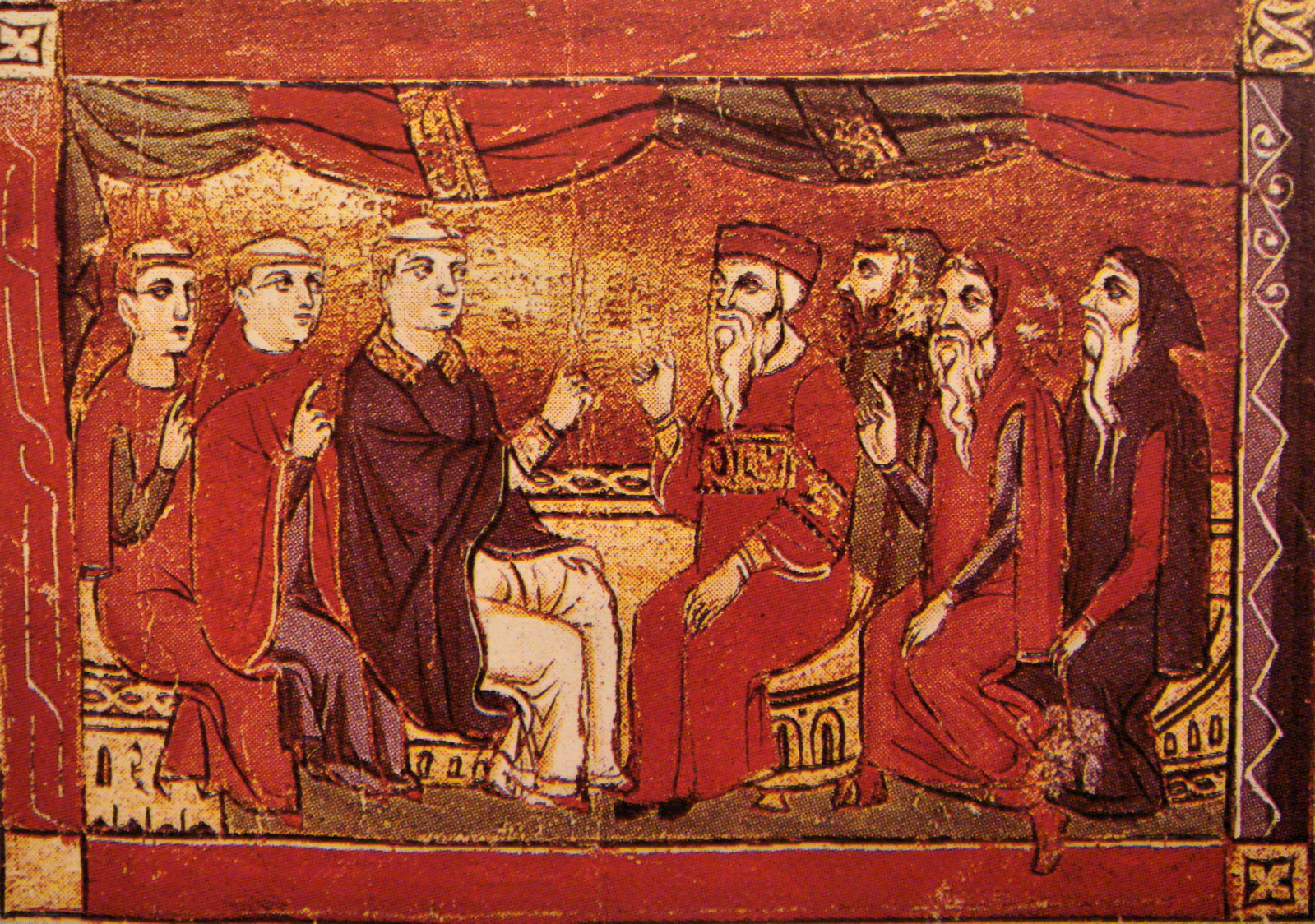A difference in the wording of the liturgy, it is sometimes argued, caused the schism, or split between the Eastern and Western churches in 1054. The Greek creed states that the Holy Ghost “proceeds” from the Father; the Latin adds the word filoque, meaning “and from the son.” But this and other differences might never have led to a schism had it not been for increasing divergences between the two civilizations.
More than three hundred years earlier, in the eighth century, a religious controversy arose in the Byzantine Empire over the use of sculptured and painted sacred images (icons) and the nature and amount of reverence that a Christian might properly pay them. Twice, for long periods (726-787 and 813-842), the emperors adopted the strict Old Testament rule that all images must be banned. (This policy is termed iconoclasm, from the Greek words for “image breaking.”) The Western popes, who believed that images were educational and might be venerated (though not worshiped), were shocked.
In the end the emperors restored the images, but as early as the 730s an emperor had punished the pope by removing from papal jurisdiction southern Italy and Illyricum (the Balkan provinces) and placing them under the patriarch of Constantinople. The papacy was determined to recover its rights in these territories. Even more decisive was the papal belief that Byzantium could not, or would not, defend Italy and the papacy against Lombards and Muslims.
Competition in the 860s between papal and Byzantine missionaries to convert the Bulgarians again led to a political quarrel. It was then that the Byzantines “discovered” the Roman “error” in adding filioque to the creed. Though this quarrel, too, was eventually settled, an underlying mistrust persisted. The Byzantines became accustomed to going their own way without reference to the bishops of Rome.
Under these circumstances the Byzantines were unprepared for a revival of the old papal efforts to recover jurisdiction over southern Italy. Norman adventurers began just after the year 1000 to conquer Byzantine territory in southern Italy and to restore its churches and revenues to the pope. The pope naturally welcomed this, but the Byzantine patriarch was unhappy over his losses. A violent and powerful man, he dug up the old filioque controversy, largely as a pretext for pushing his own grievances. In answer to his complaints, the pope in 1054 sent to Byzantium one of his most energetic and unbending cardinals. Patriarch and cardinal thereupon excommunicated each other. From this clash we traditionally date the split between the Roman Catholic and Greek Orthodox churches.
Eastern and Western Christians were also increasingly suspicious of and resistant to each other’s cultures. To the visiting Westerner, the Greeks seemed soft, effeminate, and treacherous. To the Byzantine, the Westerner seemed savage, fickle, and dangerous. Nowhere is the Western attitude shown better than in the writings of Bishop Liudprand, who had been so impressed by the emperor’s movable throne when he first visited Constantinople in 948. On a second official visit in 969 as ambassador from Otto I, he describes his reception by the emperor Nicephorus Phocas:
On the fourth of June we arrived at Constantinople, and after a miserable reception . . . we were given the most miserable and disgusting quarters ]that] . . . neither kept out the cold nor afforded shelter from heat. Armed soldiers were set to guard us and prevent my people from going out and any others from coming in. . . To add to our troubles the Greek wine we found undrinkable because of the mixture in it of pitch, resin, and plaster. The house itself had no water, and we could not even buy any to quench our thirst.
On the other side, the Byzantine reaction to Westerners is illustrated by the Alexiad, written by the princess Anna Comnena more than a century later. She says that two Normans, Robert Guiscard and his son Bohemond,
might rightly be termed “the caterpillar and the locust” for whatever escaped Robert . . . Bohemond took to him and devoured . .
For by nature the man was a rogue and ready for anything; in roguery and cunning he was far superior to all the Latins [Westerners]. . . But in spite of his surpassing them all in superabundant activity in mischief yet fickleness like some natural appendage attended him too.. .
A certain charm hung about the man but was partly marred by a sense of the terrible. There seemed to be something untamed and inexorable about his whole appearance . . . and his laugh was like the roaring of other men. . . His mind was many sided, versatile, and provident. His speech was care- Ally worded and his answers guarded.
The mutual dislike between Byzantines and Westerners was to grow steadily more intense after the late eleventh century, until it climaxed in tragedy in 1204.

